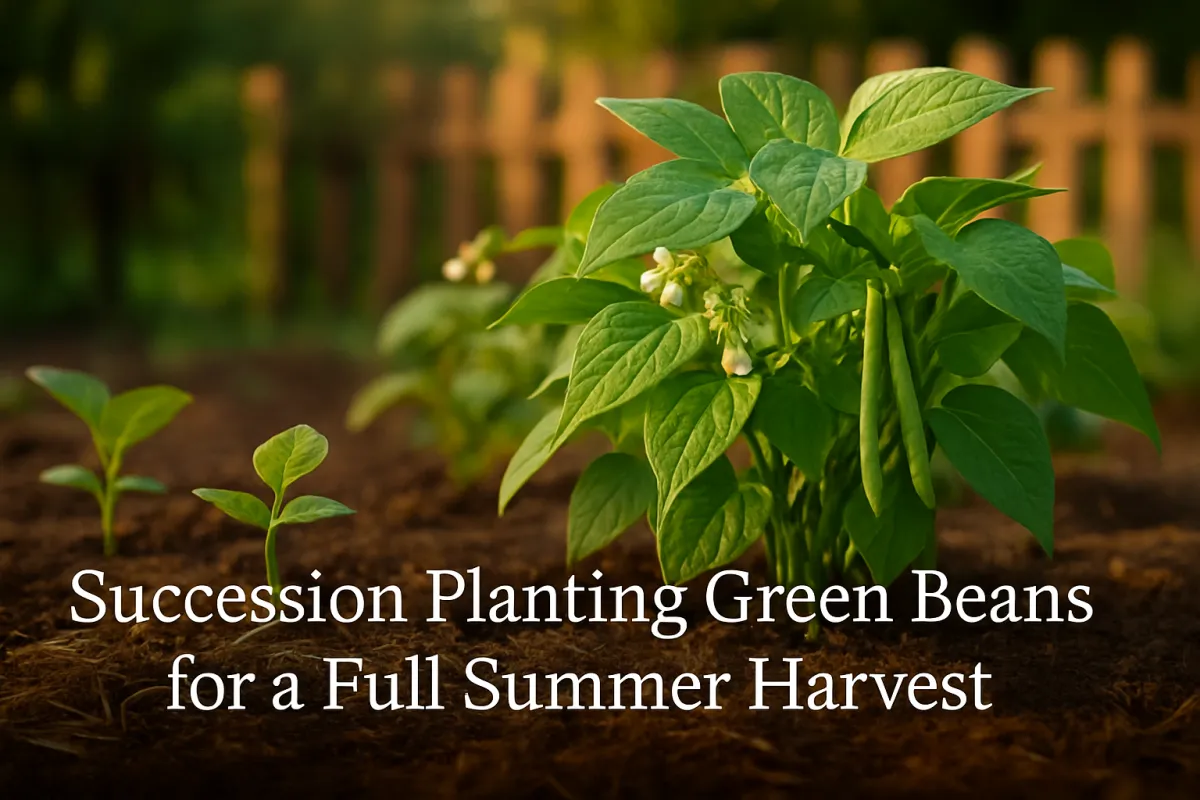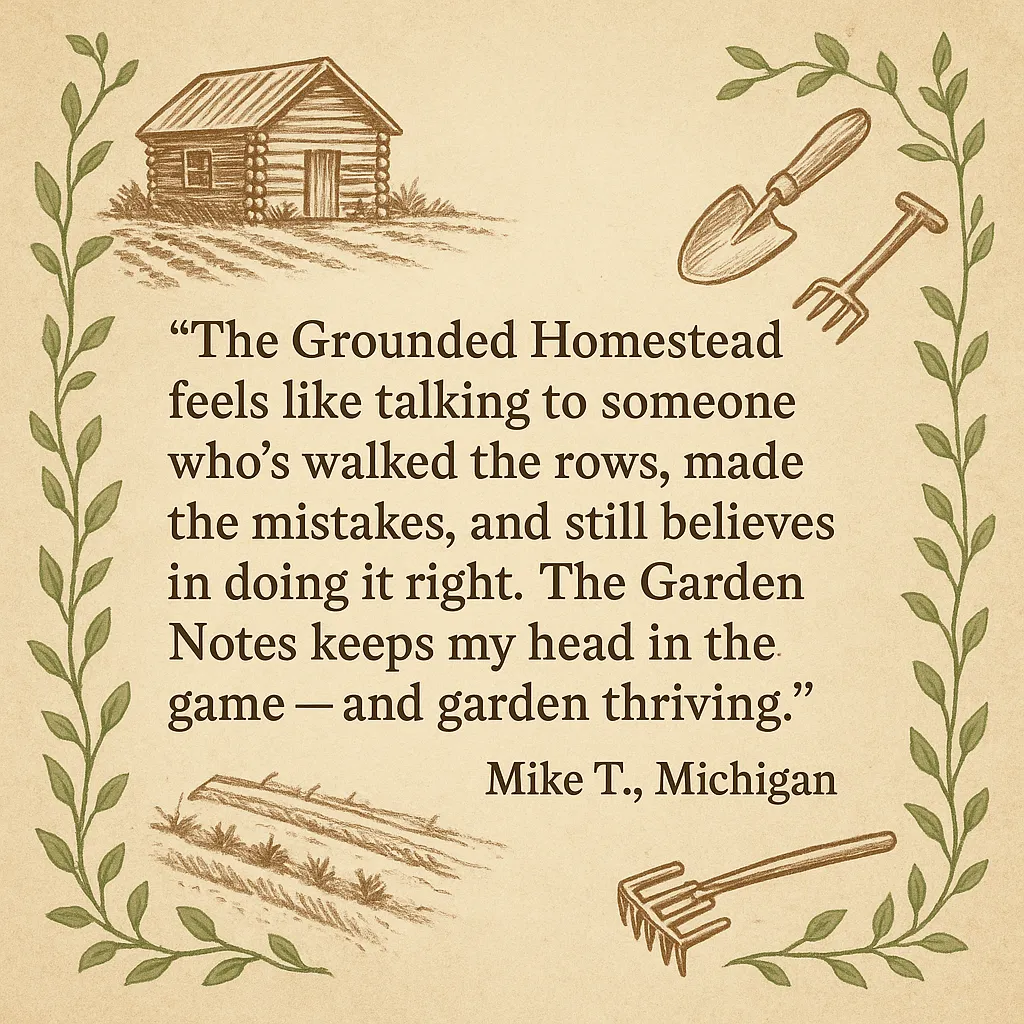
Succession Planting Green Beans for a Full Summer Harvest
Succession Planting Green Beans for a Full Summer Harvest
How I learned to stagger plantings for more beans than we could eat (almost)
I’ll never forget the first year I planted green beans in earnest. I carved out two neat rows in early May, stood back proud, and watched them take off. When the harvest hit, it hit—and I was up to my elbows in beans. We ate them fresh, I tried freezing a few, but within two weeks, the plants were spent. That was it. Just like that, bean season was over.
That’s when I learned about succession planting—and it changed everything.
Choose Your Bean Types Wisely
If you're planning multiple sowings, start by choosing the right kind of bean.
Bush beans are fast and compact. They grow to maturity in about 50–60 days and are perfect for quick turnaround plantings.
Pole beans take longer to get going but produce continuously over several weeks. They're ideal for a steady supply without having to replant.
I usually rely on bush beans for my early and mid-season successions, and then plant pole beans where they can climb and work all season long. Some of my favorite varieties? Provider for reliability, Contender for early harvest, and Kentucky Wonder for climbing.
Timing Is Everything: Sow Every 10–14 Days
Once the soil has warmed to 60°F or above, you can start your first planting. Then, every 10 to 14 days, sow a new row or section. That rhythm creates a harvest schedule that rolls through the summer, instead of coming in one giant rush.
Here’s how it looks in practice:
Zone 6 with 100 frost-free days? You’ll get 3–4 full rounds of bush beans.
Zone 8 or warmer? You might stretch it to 5 or even 6 rounds—plus a fall crop.
As a rule of thumb, I mark out each sowing date in my garden journal, noting variety, location, and a rough harvest estimate. It only takes five minutes, and it saves me from wondering what went in where come July.
Planning Your Beds for Overlap
The trick to succession planting is reserving space while still maximizing production. I like to stagger my rows in sections: plant half a bed now, leave the other half empty for next week’s sowing.
In tight gardens, you can:
Pull quick-growing spring crops (radishes, lettuce) to make room
Use containers or grow bags for one or two rounds
Plant beans between slower crops like tomatoes, then remove them once the beans are done
As Grandma used to say, “Don’t marry off every bed at once—leave room for the next blessing.”
Soil Support: Compost, Rotation & Top-Dressing
Even though beans fix nitrogen, that doesn’t mean they’re totally self-sufficient.
Here’s how I keep my bean soil thriving all season:
Before planting: Mix in compost or well-rotted manure
Between successions: Rake in a light top-dress of compost or worm castings
After 2 rounds in one bed: Rotate to a fresh space if possible, or follow with a heavy feeder like corn or squash
Healthy soil equals healthy beans. And healthy beans… well, they make for some mighty fine eating.
Managing Pests and Disease as You Go
Longer growing windows can attract trouble if you’re not careful.
Keep an eye out for:
Bean beetles: Hand-pick or use neem oil early
Powdery mildew: Water at the base and maintain airflow
Root rot: Avoid overwatering and rotate your crops
Interplanting with nasturtiums or basil can help deter pests naturally. And always clean up spent plants to prevent problems from lingering into your next round.
What to Expect From Each Planting
Your early sowings may take a little longer to mature, especially if spring nights are cool. But once summer’s in full swing, beans grow like wildfire.
Typical maturity times:
Bush beans: 50–60 days
Pole beans: 60–75 days (but they’ll keep going once they start)
Mid-season rounds usually produce the heaviest yields. Late summer plantings may grow quickly but offer smaller harvest windows as the days shorten.
Keep that in mind as you plan your final rounds—and don’t worry if one round underperforms. That’s the beauty of succession planting: you’ve got more coming.
The Final Push: When to Stop Planting by Zone
Green beans don’t like frost, so timing your last planting is just as important as your first.
Here’s a quick guide:
Zones 3–6: Last sowing by early August
Zones 7–8: Sow through early to mid-September
Zones 9–10: Fall crops thrive with sowings into October
To stretch your season, use row covers or even a small low tunnel. Just be sure to switch to a fast-maturing variety and baby them as the temperatures drop.
Too Many Beans? Good. Here’s What to Do.
At some point, the harvest will stack up faster than you can eat it. That’s when the real work (and joy) begins.
Here’s what I do:
Freeze: Blanch for 2–3 minutes, then bag and label
Can: If you’re into pressure canning, this is where green beans shine
Share: Neighbors, church pantries, and friends always appreciate a basket
Save seeds: Let a few plants mature fully at the end of the season
The abundance is part of the reward. It means you did it right.
A Final Thought: Planting with Intention
There’s something sacred about sowing in rhythms. One row today. Another next week. It’s a pattern that teaches patience, attentiveness, and care. Grandma always said, “Don’t put all your beans in one row.” It wasn’t just gardening advice—it was about life.
We’re not meant to do it all at once. Growth takes time. And when you plant with intention, the harvest tends to follow.
“Build houses and settle in them; plant gardens and eat what they produce.” — Jeremiah 29:5


Facebook
Instagram
X
Youtube